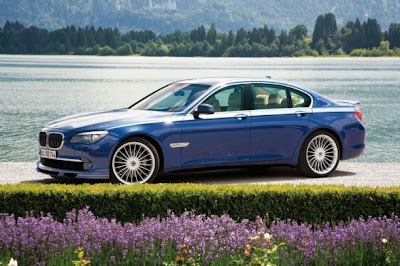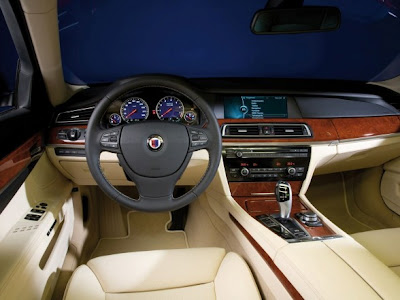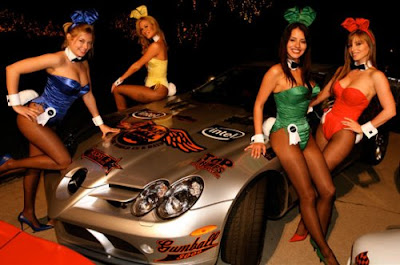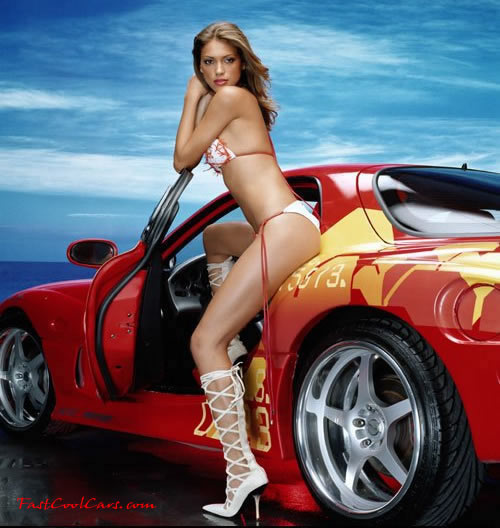|
|
|---|
Thursday, September 30, 2010

The Ford Ranger Max pushes everyone's expectations of Ranger. Visually bold and muscular, it takes to the stage at the Ford stand with confidence, sophistication and craftsmanship.
Delivering Tough Style
Genuine truck toughness comes from great design and engineering, which means the production Ford Ranger is the ideal foundation for creating Ford Ranger Max Concept. No under-skin modification was needed with Ford Ranger to produce Ranger Max.
The distinctive contrast between Ranger Max's hardcore orange paintwork with matte black accents is inspired by the functional design found in some modern power tools - just like those used by many Ranger owners every day. Ford designers recognize how absolute function and durability inspire these industrial tools and make them more appealing.
Ford Ranger Max is full of details like this, such as the word GRAB‚ imprinted subtly on the bold, black grab handle in the side of the sportsbar linked to the cab. Every letter is precisely shaped in a 'truncated' font that complements the toughness and utility the overall truck design communicates.
Several power tool brands have inspired Ford designers. Other inspirations for Ranger Max have come from active sports, such as rock climbing, and the tough, technical products used by active sportsmen.
Taking Ranger to the Max
With its character as the ultimate power tool, Ford Ranger Max Concept exudes confidence and purpose. It's up for the job - work or fun - and its tough style says so. It features full surfaces that convey the power and strength of its tough-truck backbone. The detail of its design demonstrates this show truck has been designed by people who know trucks and love them.
Dynamic Profile
Ranger Max's high impact establishes a powerful presence wherever it goes.
That bright orange high-energy colour is officially known as Mango Hit. It is the colourful creation of Debbie Pascoe, colour and trim manager, Ranger Max design team.
Its profile exudes power and dominance as well as balanced proportion. The flexed 'power dome' shape of its hood communicates the pulling power and high torque of the engine. The power dome shape carries through to influence the design of the hard tonneau cover at the rear of the vehicle. These two overt muscular design elements give Ford Ranger Max power and solidity. It's enough to scare the typical pickup into the gym for serious weight training.
Self-confident Ranger branding - embossed in the top of the front grille surround - is another proud aspect of the front design.
Two major design elements link together to form the dominant frontal look of Ford Ranger Max Concept. The corporate three-bar grille imbeds itself into the lower enlarge air intake. A distinct line starting from the headlamps follows around the nostril and borders the lower air intake. This signature line unites the major design elements to create the defined face of Ranger Max.
Powerful Pulling Away
Ford Ranger Max has presence on the road. Its bold rear design is the combination of proportion and details such as the pronounced contours of the tonneau cover which emulate the power bulge on the bonnet. The distinctive sportsbar integrates the cabin area with the tonneau cover. Continuing rearward, Ranger Max is neatly finished off with a tailgate cladding embossed with RANGER and a pair of unique tail lamps.
Labels: Ford
Tuesday, September 28, 2010
Labels: 2010, Lotus, Sports Car
Monday, September 27, 2010
One of our goals here at Speedhunters is to show car culture on a global scale, and the popularity of USDM and Spocom style in Japan is a great example of this. While JDM fanatics in the United States and elsewhere try to replicate car styling seen in Japan, a lot of Japanese enthusiasts are doing the opposite and converting their standard JDM vehicles into something that looks like it came straight out of Southern California. Last month, I went to the Mooneyes Street Car Nationals in Tokyo and the event gave me good chance see some different types of USDM-inspired car builds. As an American, I was highly impressed with the authenticity of the cars even if the style may not have been my cup of tea.
The USDM movement in Japan has a number of different subcultures, so let's take a quick look at some them. Of course, genuine imported American cars also have a strong following in Japan, but for this post we will just be dealing with Japanese-branded cars modified with a heavy American influence.

American-inspired JDM rides are not limited strictly to late model cars. Here we see a classic Mitsubishi Debonair sedan done in a traditional early '60s kustom style. The fender skirts, pinstriping, and paint work give this car an authentic vibe. It also helps that the original car's styling borrows a lot from its American counterparts. Mooneyes makes a number of parts and accessories that allow Japanese car owners to add some old school California-style flavor to their cars.
Other USDM fans like to build the cars to look like typical daily drivers you might see in the states. Popular modifications for this group include unpainted black bumpers and US-market corner lights and emblems. Front car bras are also a popular addition to these cars, though I don't recall seeing too many of these back in the states. Due to it's tremendous popularity and the United States, the Honda Civic is the most popular platform for this style. In Japan, older models like the EF Civic pictured above are a rare sight and this makes them stand out in the USDM scene.
The spocom cars are probably the best known USDM subculture. Japanese like to shorten foreign words, and the word "spocom" is a shortened version of the term "sport compact". This style has been around for a while and was originally inspired by the tuner show cars seen in the United States. These cars are often over the top and heavy on cosmetic work while being mechanically stock. The Civic on the right side of this photo is classic spocom style. Recently, as the wild tuner style cars have lost popularity in the states, some Japanese USDM enthusiasts have evolved their style as well. The newest trend is "USJDM" style. It's hard to explain, but it's basically Japanese copying the so-called "JDM look" that is now popular in the US. That make any sense? Probably not.
Japanese mini trucks are are very popular in the United States, but they are actually quite rare to see in Japan. For general use in Japan, tiny kei trucks and vans are much more popular than the standard small pickup truck. The people that do have mini trucks in Japan really love them, and there is a large custom mini truck scene here. Just like in the states, Japanese mini trucks feature air suspension and body drops, massive wheels, and wild paint. I noticed that a number of them are also sporting engine swaps like the Toyota 3SGE or Nissan SR20DET.
This Honda Inspire and Fit are of a subculture inspired by the urban style seen in Dub Magazine and others. Large chrome wheels and massive stereo systems are key features of these cars. There are a number of Japanese magazines for followers of this style.
Here is the ultimate in JDM and USDM fusion. A Honda Odyssey minivan with wide whitewalls, flames, and a tuck 'n roll interior. I love the fake sidepipes! This style has also been seen on cars like the Toyota bB and Nissan Cube. I think it would be cool to see Americans start borrowing from this look. At that point, the sharing of style between the Americans and the Japanese will have come full circle.
Labels: USDM and Spocom Style in Japan
Sunday, September 26, 2010
Labels: BMW Alpina B7
The 4007 extends Peugeot’s product portfolio and range appeal, with this new SUV, combining the best from these two accomplished automotive Companies. The Peugeot SUV features an innovative electronically controlled 4-wheel drive system, a powerful, latest-generation HDi DPFS diesel engine, combined with a versatile and dynamic package, with high levels of ride comfort, both on and off road.
4007 is generously equipped, with a high level of standard specification, and the distinctive exterior styling is unmistakably Peugeot, all of which combine to provide customers with a vehicle of huge appeal and versatile performance, with strong attributes and a product embracing all its environmental responsibilities.
4007: unmistakably Peugeot
The new SUV extends Peugeot’s existing car:
4: identifies its positioning to Peugeot’s upper range into new territory, and because the 4007 is medium sector, with the 4 series. a new platform approach for the Marque, like the1007, carries the special ‘00’ identity.
00: Making its first appearance on the 1007, the double zero clearly designates a different and original car over and above the classic car range.
7: and pinpoints its generation in the current series.
Style
Designed by the Peugeot Style Centre in Velizy, 4007 undeniably displays its affinity to the Marque through its elegant, feline style.
The front aspect emphasises the car’s style, robustness and sporting credentials and is equipped with a wide, open front grille in keeping with Peugeot’s current styling designs.
This dynamic appearance is strengthened by the finish of the lower front panel, which incorporates fog lamps and air intakes embellished with chrome surrounds. The confident design reflects the elegance and refinement that characterises the Peugeot style.
Almond-shaped smooth-glass headlamps are positioned over the front wings, forming the link between the wraparound front panel, the wings and the ribbed bonnet which enhances the luxurious and robust appearance of 4007. A large Peugeot badge is set at the front of the centre ribbed design located at the top leading edge of the bonnet.
The curved wings contribute to the strong presence of the vehicle. Its wide wheel arches, large alloy wheels and elevated ground clearance provide clear evidence of the dynamique potential of the 4007 regardless of where it is to be driven.
The elegant profile of the 4007 also reinforces its sporty appearance, thanks in particular to an aerodynamic roof line. Chrome finish to the window frames and sill mouldings are tasteful highlights that provide genuine attractive qualities.
The style at the rear is accentuated by translucent ruby lights with a curved profile, and located under the rear screen they frame a brushed aluminium trim with the Peugeot brand clearly displayed above the chrome Lion logo.
While the lower tailgate extends down to the body sill to preserve the robust structure and elegant appearance of 4007, the design incorporates an upper opening hatch with a glazed rear screen and provides convenient access to the boot area.
The interior design also enhances the sporty and luxury feel of the 4007. The black fascia panel, with its special soft texture, has a clear and attractive style. Instrumentation has deep contoured dials with a sports layout with information and warning details displayed between the tachometer and speedometer dials.
The interior is trimmed throughout with a strong Peugeot identity. An aluminium coloured finish is used to highlight air vent surrounds, grab handles and other key controls. The seats are manufactured from a high-quality three-part fabric, adding a further sporty touch. This also applies to the seats in the versions trimmed in high quality leather that also features attractive visible stitching.
4007 dimensions
With a length of 4.64m and a width of 1.80m, Peugeot’s SUV stands out by its height (1.67m) and above all by its ground clearance (174mm), a sign of its ability and capability to venture off road.
Equipped with 5 doors, the 4007 has seating for up to seven people, the rear two seats of which fold flat into the rear boot floor space. Designed with versatility in mind, its has a highly modular load area to permit a boot volume of up to 510 dm3 under the parcel shelf (VDA standard) in the 5-seat configuration, which can be extended to 1686 dm3 in the two-seat configuration.
In addition, due to its split tailgate configuration, the flat loading sill height is only 600mm from the ground.
4007 - A benchmark structure
The body structure has been developed with the Mitsubishi Motors Corporation and evolves their wealth of experience for safety and all-terrain capability in building 4x4 SUVs of great reputation.
Much work was carried out to achieve a structure that is both extremely rigid for rigorous vehicle handling yet deformable in key areas to absorb energy to protect occupants in the event of an impact. The side members have an octagonal cross-section which helps to control the dissipation of energy. As a result, in the event of frontal impacts at low speed, energy is absorbed by the front section of the side member and not transmitted rearward, a by-product of which minimises insurance repair costs.
The front side members located at the back of the centre of the bulkhead panel and lower structure by three ‘legs’. These legs disperse the energy generated across each structure. Reinforcement bars located in the doors also protect occupants in the event of a side impact, as does impact absorbing padding inserted into the door panels.
Being a 4x4 vehicle and therefore being taller than traditional cars, the structure has been designed to ensure ‘crash compatibility’ in the event of collision, providing effective protection to occupants of all affected vehicles.
The power train, mounted in the transverse position, is positioned within the chassis which is reinforced by a central cross member under the engine. Hydraulic mountings, combined with a set of reaction link rods, reduce the 
The roof is constructed of aluminium to lighten the transmission upper vehicle weight by 5 kg and thereby reduces the centre of gravity by around 4mm.
The full CAN electronic architecture is similar to that found on current Peugeot vehicles.
Finally, to preserve the ground clearance and at the same time give the car an adequate range, the fuel tank, with a total capacity of 60 litres, is cleverly divided into two, located on either side of the rear transmission and connected by a transfer pump system.
Wheels and suspension
4007 benefits from the latest technologies by featuring large alloy wheels and tyres capable of high levels of on-road refinement combined with an off-road grip capability which extends the versatility for leisure use, characterised by modern-day SUVs.
The 4007 features independent suspension on all four wheels, with McPherson type struts at the front, with a 22mm anti-roll bar and a multi-arm design at the rear, with a 20mm anti-roll bar.
A lot of attention has been paid with the tyre manufacturers to develop an 18" tyre (225/55 R18) suitable for both on-road and modest off-road driving. A 16" tyre (215/70 R16) has also been developed for more extreme leisure pursuits where the vehicles driving abilities in under poor conditions are more important.
Peugeot engineers have specified double piston calipers with front ventilated discs to maximise braking efficiency. The front brakes have a diameter of 294mm x 24mm and at the rear, solid discs with a diameter of 302mm.
4007 features pump-assisted hydraulic steering modulated according to engine speed. Its performance has been fine-tuned in conjunction with tyre development to give the assured feeling of control characterised in other Peugeot vehicles. Qualities of linearity, accuracy and self-centring ensure fluid handling and an excellent level of driveability in all situations.
Body rigidity has benefited from Peugeot’s chassis and dynamic handling expertise to give the 4007 the driveability similar to a modern hatchback, while maintaining a level of comfort in keeping with the car's versatile capabilities> Spring stiffness and damping characteristics have been tuned specifically to the vehicle and its 2.2-litre power unit.
Electronically controlled 4-wheel drive
The 4007 is equipped with an innovative ‘on demand’ 4-wheel drive system. An electronic system controls a viscous clutch located ahead of the rear axle to distribute torque between the front and rear axles to thereby optimising engine and transmission performance. This technology is developed by the Mitsubishi Motors Corporation, a recognised specialist in 4-wheel drive transmissions.
The transmission features a transfer box located on the gearbox output and directs torque to the rear axle via a longitudinal propshaft. An Electronic Control Unit (ECU) calculates in real time parameters such as the vehicle speed, steering wheel angle, the difference in speed of rotation of the front and rear wheels and the level of acceleration, in order to electronically control the viscous clutch assembly.
4-wheel drive on demand
The driver can select three driving modes by selecting the mode on a central knob located between the two front seats:
2-wheel drive mode (2WD)
This mode corresponds to driving on tarmac when the driver does not expect any loss of traction (a dry road). The vehicle operates most efficiently in front-wheel drive (2WD), thereby reducing fuel consumption.
Automatic 4-wheel drive mode (4WD)
This is the vehicle’s normal operating mode, with torque distribution between the front and rear axles controlled by the ECU. This provides the assurance of optimal road holding regardless of surface conditions. The table below provides a summary of torque distribution between the two axles according to different driving conditions.
Torque distribution to front and rear axles (Automatic 4WD mode)
4-wheel drive lock mode (4WD)
Used under conditions of reduced traction, four-wheel drive becomes permanent with a higher distribution of torque to the rear wheels compared to the 4WD mode. This is the case in particular at low speed, where 50% of the additional torque will be distributed to the rear wheels compared to the automatic 4WD mode.
Engines
4007 is launched with a latest-generation HDi Diesel engine derived from a co-operation between the PSA Peugeot Citroën and the Ford Motor Company.
With a capacity of 2.2-litres, the engine develops a maximum power of 115 kW at 4000 rpm, or around 156bhp CEE. This is a single-turbo version of the 2.2-litre HDi 125 kW engine, but with variable geometry, and was recently introduced in the 407 and 607 ranges.
To ensure a high level of driveability and exploit to the full the maximum torque of 380 Nm available from low engine speeds (2000 rpm), a 6-speed manual gearbox manufactured by ‘Aisin‘ is coupled with the engine.
This power unit is characterised by a high level of verve and dynamic performance which is approaching that of modern Peugeot hatchbacks in the upper middle segment. Handling characteristics set the 4007 apart from its direct competitors, namely other compact SUVs.
ENGINE
- 2.2-litre HDi 115 kW (~156 bhp)
- Type 4 cylinders – 6-speed manual gearbox
- Position Transverse
- Capacity (cm3) 2179
- Maximum power (kW) 115 à 4000 rpm
- Maximum torque (Nm) 380 à 2000 rpm
PERFORMANCE - (1) driver only (2) half load
- Kerb weight with 7 seats (kg) 1750
- Maximum speed (km/h) (2) 200
- Standing start 0 to 400 m (s) (1) / (2) 17.3 / 18.0
- Standing start 0 to 1000 m (s) (1) / (2) 31.8 / 33.0
- Standing start 0 to 100 km/h (s) (1) / (2) 9.9 / 11.0
- Acceleration 30 to 60 km/h in 3rd (s) (1) / (2) 3.8 / 4.5
- Acceleration 80 to 120 km/h in 5th (s) (1) / (2) 9.3 / 11.0
- Acceleration 80 to 120 km/h in 6th (s) (1) / (2) 12.2 / 14.5
FUEL CONSUMPTION - (1) driver only (2) half load
- Urban drive cycle (l/100km) 9.5 9.6
- Extra urban drive cycle (l/100km) 5.9 6.0
- Combined drive cycle (l/100km) 7.2 7.3
- CO2 on combined drive cycle (g/km) 191 194
The engine is equipped with the latest-generation Diesel Particulate Filter System (DPFS). Due to its electronic management and the use of an additive to reduce the ‘particle’ combustion temperature, as well as the ‘octosquare’ filter element shape, filter’s service interval has been extended to 18,000 km. This reinforces Peugeot’s environmental credentials as one of the leading manufacturers in the clean technology stakes and most specifically where the elimination of diesel particle emissions is important.
Safety
In addition to the four-wheel drive and strong body structure, 4007 benefits from the latest technologies to protect its occupants in the event of impact and avoid driving hazards.
ESP (Electronic Stability Programme) is a standardfit feature on the 4007. This system enhances the vehicle’s stability by controlling the braking and engine power applied to individual wheels. The electronic system helps to keep the vehicle on the trajectory required by the driver, by controlling oversteer and correcting understeer during vigorous use of the steering wheel or under precarious road conditions.
It should be emphasised that compared to a classic hatchback, the 4WD transmission, coupled with the ESP system, also controls torque transmitted to the rear wheels, thereby increasing the efficiency of the stability control system. In addition, as well as ABS, the vehicle incorporates a traction control system which monitors traction and improves engine performance and vehicle behaviour during acceleration in curves or on a gradient.
In terms of passive safety, the 4007 is equipped with six airbags: two front airbags, two side airbags and two curtain airbags.
The adaptive front airbags inflate to two levels according to the severity of the impact. The passenger air bag can be switched off by means of the ignition key switch located in the glove box to allow for the installation of a rear-facing child seat. An indicator on the fascia panel reminds occupants if the airbag has been switched off.
The side airbags are housed in the back of the front seats. In the event of a side impact they protect the chest and upper part of the body. The curtain airbags also protect the heads of the passengers in rows one and two in the event of side impact.
For child safety, the 4007 offers Isofix mounting points in all three row-two seats. To alert the driver that a seat belt has been unfastened while driving, an audible signal is emitted together with a message on the instrument panel.
The enlarged field of vision combined with the raised driving position, a characteristic of SUVs, means the driver will feel safer when driving in traffic. Passengers also benefit from this raised position and from the panoramic view by the large glazed surface area of the 4007.
Modularity and versatility
The 4007 can accommodate up to seven people, thanks to a third row of seats which retracts into the floor of the boot. These two cleverly designed additional seats can be manipulated easily by means of three straps: one for unlocking, one for deployment and one for folding. Occasional passengers occupying the retractable bench seat benefit from head restraints and seat belts with inertia reels just like the other occupants.
The row-two seats split 40/60 and can slide over a distance of 80mm. Additional to these functions is the possibility of folding the entire bench seat in a concertina fashion by means of an automatic device. Two switches located on the right-hand and left-hand sides of the boot allow electrical unlocking of the bench seat, which then folds double by the action of springs. It is also possible to fold one section of the bench seat manually by means of two knobs located on ether side of the seats.
- This allows access to the two retractable seats and can free up additional load volume.
- Thanks to these modular configurations, the boot offers exceptional load volumes.
- With row-two fully retracted, the load volume up to the roof is 1686 dm3 (VDA standard).
In a more conventional configuration, with the second row in place, the volume under the parcel shelf is 463 dm3. This can be increased to 510 dm3 with the bench seat as far forward as possible, due to its slide system. With seven people in the car, the boot volume to the level of the row-three seat backs is still 184 dm3.
The boot, easily accessible because of the split opening tailgate, is easy to load. The lower part of the tailgate can take a load of 200 kg. Due to the flat floor and the absence of a load sill, heavy objects laid on the lower tailgate are easy to slide inside the boot.
A removable and adjustable flexible roller-blind can be used to conceal the boot’s contents. Highly modular and cleverly designed, the interior of the 4007 is therefore ideal for versatile use.
Clever numerous storage spaces
Maximising the interior space of 4007 is demonstrated by the many storage spaces available. Two glove boxes are available in the upper and lower part of the fascia panel. The lower glove box can be locked with the key, while the upper one is refrigerated.
There is a small closed storage space at the top of the centre console, while a swivel storage unit in the roof can hold a pair of glasses. Behind the courtesy light, a recess can accommodate a car park ticket or toll ticket and cup holders are accessible on the driver’s side and between the front seats. The door panels house a large storage area in the lower section able to hold a halflitre bottle.
The central front armrest, adjustable over a length of 65mm, opens in two parts. The lower part, which has a 12 volt connector, can contain up to 10 CDs. The upper part lets occupants keep small objects such as mobile phones within arm’s reach and the rear central armrest also incorporates two cup holders.
In car comfort
Particular attention has been paid to acoustic comfort, particularly in terms of engine noise insulation, ensuring a high level of comfort for this vehicle range and engine type.
From the point of view of temperature, passengers in the 4007 benefit from automatic air conditioning equipped with a pollen and dust filter, which guarantees a regulated interior temperature between 18° and 32 °C.
Multimedia equipment
With a view to comfort and convenience, the latest-generation of audio and telematic equipment is available. According to market versions, 4007 is specified with a single-CD / radio / MP3 player, or a radio / MP3 player with 6-disc CD Autochanger. In all cases, 6 speakers with a total power of 140W to provide clear sound entertainment.
Available as an option in some markets, it is possible to choose a high-performance ‘Rockford Fosgate’ Hi-Fi system with a maximum output of 650W. For perfect reproduction of high fidelity sound, eight speakers are distributed in the passenger compartment accompanied by a bass cabinet in the boot. This unit incorporates absorbent materials designed to reduce vibration and any audible interference liable to diminish sound quality.
A colour satellite navigation system with 7" touch screen is also available as an option. The integral 30GB hard disk contains cartography for Europe (NAVTEQ), leaving 10GB free to store around 2500 tracks in MP3 or WMA formats.
Further equipment, like Bluetooth hands-free kit, a DVD player incorporated in the position of the courtesy light with a retractable 9" screen, or a sunroof can supplement the 4007s standard specification.
Available colours
A total of eight exterior colours are available for the 4007 range; all or some of them will be available according to specific markets.
Solid colour:
-
Antarctic White
Perly colours:
-
Pearl Black
-
Pilbara Grey
-
Istria Blue
Metallic colours:
-
Artic Silver
-
Baïkal Blue
-
Barkhane Bronze
-
Garrigue Green
Labels: 2011, Peugeot 4007, SUV
Broken fibrelass, zipties, spacers and old Nissans. Surely the novelty is wearing off?
Well, not for me! I still can’t get enough of it and I blame guys like Team Mulsanne. I am seriously loving their cars at the moment.
Street car style at it’s finest!
Labels: Team Mulsanne:
Saturday, September 25, 2010
 Gumball rally for those not familiar with it is essentially a coast to coast road trip adventure from Los Angeles to Miami from May 2 - 8th for rich people with the time and with cool cars. Therefore, like usual, there’s a wide variety of supercars, including the Nissan GTR, Bugatti Veyron, Porsches, Ferrari, Lambo etc…
Gumball rally for those not familiar with it is essentially a coast to coast road trip adventure from Los Angeles to Miami from May 2 - 8th for rich people with the time and with cool cars. Therefore, like usual, there’s a wide variety of supercars, including the Nissan GTR, Bugatti Veyron, Porsches, Ferrari, Lambo etc…
Labels: Cool Cars, Gumball Pictures, Sport Car Pictures, Super Cars
 Gumball rally for those not familiar with it is essentially a coast to coast road trip adventure from Los Angeles to Miami from May 2 - 8th for rich people with the time and with cool cars. Therefore, like usual, there’s a wide variety of supercars, including the Nissan GTR, Bugatti Veyron, Porsches, Ferrari, Lambo etc…
Gumball rally for those not familiar with it is essentially a coast to coast road trip adventure from Los Angeles to Miami from May 2 - 8th for rich people with the time and with cool cars. Therefore, like usual, there’s a wide variety of supercars, including the Nissan GTR, Bugatti Veyron, Porsches, Ferrari, Lambo etc…
Labels: Cool Cars, Gumball Pictures, Sport Car Pictures, Super Cars
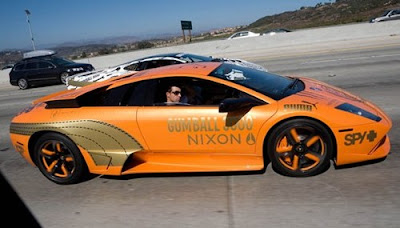
Labels: Cool Cars, Gumball Pictures, Sport Car Pictures, Super Cars
Labels: Sexy Lady and sweet ride

































